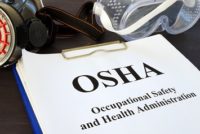Category: Injuries and Illness
Modern safety management goes beyond covering traditional workplace accidents to now being equally concerned with illnesses caused on and even off the job. This section will explain what you need to know to avoid both injuries and illnesses, and to track your progress in reaching this goal.
Free Special REport: Does Your PPE Program Meet OSHA’s Requirements?
More people are surviving cancer, but cancer is occurring in more people (one factor associated with longer life spans). The most recent data compiled by the National Cancer Institute, which was released in April 2018, show that from 2006 to 2015 cancer death rates decreased by 1.8 percent among men and 1.4 percent among women. […]
OSHA has ordered Springfield Terminal Railway Inc. to compensate an employee who faced an investigative hearing with possible disciplinary action or termination for reporting an on-the-job injury at its facility in Andover, Massachusetts. OSHA ordered the company to pay the employee $10,000 in compensatory damages, $75,000 in punitive damages, and attorney’s fees.
Question: I’m attempting to determine if an employee claim of musculoskeletal disorder for both right and left wrists actually was caused by the workplace workstation as claimed by the employee. The condition resulted in medical operations to both wrists. When does this incident become an OSHA recordable injury, and are the days away from work […]
Affecting about 48 million people in the United States, hearing loss is one of the most common disabilities among American workers. The effects of hearing loss on the workforce can be far-reaching, resulting in lost productivity, lower wages, and increased safety risks.
Despite a 2014 OSHA rule that strengthened provisions that require employers to inform OSHA about work-related fatalities and serious injuries and illnesses, the Department of Labor’s (DOL) Office of Inspector General (OIG) found that OSHA’s data on these incidents are deficient as is its assurance that employers abated the hazards that contributed to the incidents.
Each year on September 26, the mesothelioma community raises awareness for this aggressive and rare cancer on Mesothelioma Awareness Day. This year is the 14th anniversary of the awareness day, which was established in 2004 by the Meso Foundation to bring awareness to the disease and allow community members to come together.
It’s one of the most common ergonomic injuries—back pain. A lot of the blame is falling on how chair design has evolved over the years. Even if you can’t do anything about the chair you sit in at work, here are a few tips and tricks for minimizing the risk of discomfort and possible injury.
You may have wondered why OSHA and OSHA-authorized states refer to occurrences in which workers are injured or killed as incidents, not accidents. The main reason is that, by the dictionary definition, an accident is an “unexpected or unforeseen” incident that usually results in injury or damage. To take an extreme example, an airplane that […]
A Centers for Disease Control and Prevention (CDC) study that examined unintentional or undetermined overdose deaths in 26 occupation groups found that construction occupations had the highest proportional mortality rates (PMRs) of deaths from both heroin and prescription opioids.
Fatigue is an often underrecognized risk factor in many work environments. Any work environment that contains key risk factors such as long working hours, on-call work, seasonal highs, shiftwork, physically and mentally demanding work, boring and monotonous work, safety-sensitive work, and driving operations put their workers at a higher risk of fatigue-related incidents.










